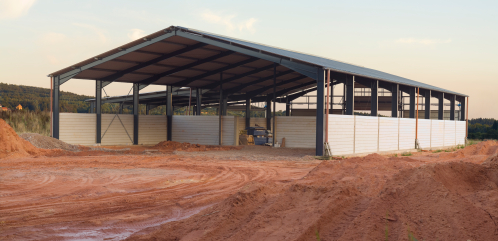Home > Steel Buildings > Pole Buildings Prices
 Real examples of pole buildings prices
Real examples of pole buildings prices
Pole buildings represent one of the oldest styles of construction, using less concrete and less wood to create a sturdy structure that rivals the durability of most other types of modern construction. They’ve long been a preferred method of storage for livestock and farm equipment as well as providing a sheltered area for workshops and garages. In part, the popularity of pole buildings can be attributed to the simplicity of their construction. But even greater than that, pole buildings prices have allowed many people to erect a reliable structure far more cost-effectively than other types of buildings – often at the lowest cost per square foot when compared to other conventional methods.
Pole buildings prices taken from actual construction
The following are a few real life examples and their related costs. Keep in mind that costs provided by pole barn manufacturers vary somewhat depending on your location and the added features you include. For example:
| Pole Building Type | Location | Dimensions | Doors and windows | Assembly | Price |
| Steel hay storage barn | Wisconsin | 70x70 | 24ft slider and 1 walk-through door | Self | $42,000 |
| Steel storage building | Wisconsin | 60x90 | Unspecified | Self | $36,595 |
| Steel garage and shed | Unspecified | 40x60 | 1 slider, 1 16x16 door, 1 walk-through door | Included | $28,500-38,000 |
- Pole Building #1 – In Wisconsin, a basic no-frills barn was quoted at $7.50 to $8.75 per square foot, with a 70-foot by 70-foot building, combining shop workspace and hay storage, and including one 24-foot slider and a service door for around $42,000.
- Pole Building #2 – Also in Wisconsin, Cleary Building was reportedly advertizing a storage building “special” that included a 60-foot by 90-foot building for $36,595, though no specifics in regard to doors and windows were mentioned in relation to the package itself.
- Pole Building #3 – The package for this 40-foot by 60-foot garage and equipment storage shed contained one sliding door, one 16-foot by 16-foot door, one walk-in door and no windows. Including construction and tax, costs ranged from $28,500 to $38,000 and included bids from a number of different local providers.
Buying Tip: To get the most accurate pricing, make sure you include any specific requirements related to wind resistance or snow weight. Plus, eave height and door height are two other factors that have been cited as having a considerable impact on the final pole buildings prices you pay.
How is a pole building constructed?
The name “pole building” refers to the structures’ post frame construction, with treated posts inserted into the ground approximately every 10 to 12 feet. These posts have trusses attached to them, creating sections referred to as a “bay.” The poles or posts form the skeletal structure of the building and a treated skirt board is installed on the ground between the posts to form the building’s base (as opposed to standard stud wall construction that rests on top of a poured concrete foundation). Girts are then nailed between the posts to frame the walls horizontally and purlins are attached to the trusses to form the roof.
Traditionally viewed as one of the most economical means of construction to cover land, pole buildings have a wide range of uses in addition to farming applications including guest houses, pump houses, tool sheds, greenhouses, artist workspaces and craft rooms.
